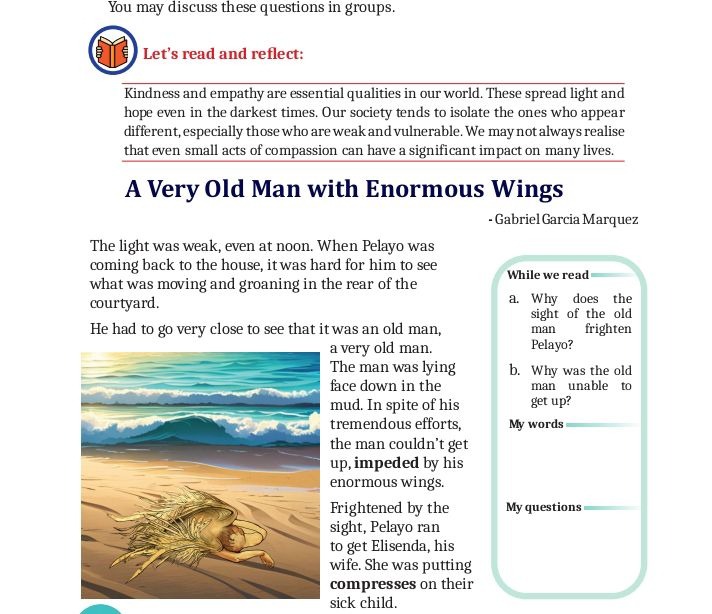Detailed Study Notes on "This is a Photograph of Me" by Margaret Atwood
Detailed Study Notes on "This is a Photograph of Me" by Margaret Atwood
Introduction
"This is a Photograph of Me" is a thought-provoking poem by Margaret Atwood, a renowned Canadian poet and novelist. The poem was published in her 1966 collection The Circle Game. It explores themes of identity, memory, perception, and the invisibility of marginalized voices. Atwood uses a unique narrative structure and evocative imagery to reveal deeper truths about existence and disappearance, ultimately making a powerful feminist and existential statement.
Summary of the Poem
At first glance, the poem appears to describe an old photograph. The speaker describes the setting in a calm and ordinary tone, mentioning the landscape details—the house, a small lake, and surrounding trees. However, as the poem progresses, an unsettling truth emerges: the speaker, the subject of the photograph, is not immediately visible. It is only upon closer examination that the speaker reveals she has drowned in the lake, and her presence remains obscured beneath the surface.
This dramatic revelation shifts the reader’s perception of the poem. What initially seemed like a simple description of a photograph transforms into an eerie and profound meditation on loss, identity, and the way history erases certain voices. The speaker’s ghostly presence lingers beneath the surface, metaphorically representing individuals, particularly women, who have been silenced or overlooked.
Themes in the Poem
One of the dominant themes of the poem is invisibility and erasure. The speaker’s drowned body beneath the lake suggests how certain individuals—especially women—are often overlooked or hidden in historical narratives. Atwood highlights the way voices can be silenced, both literally and metaphorically.
Another significant theme is perception and reality. The poem plays with the idea of how people interpret images and stories. The reader initially sees a tranquil description, but deeper analysis uncovers a disturbing reality. This duality mirrors the way individuals often see only the surface of things, failing to recognize the hidden struggles of others.
The theme of death and memory is also central to the poem. The speaker, though physically absent, continues to exist through the photograph. This idea suggests that even after death, people leave behind traces of their existence, whether through memories, art, or history.
Symbolism and Imagery
Atwood masterfully uses symbolism and imagery to reinforce the poem’s deeper meaning. The photograph itself represents memory, history, and the way people are remembered or forgotten. It is an artifact that captures a moment, but it is also selective, showing only what is visible while concealing deeper truths.
The lake serves as a powerful symbol of concealment and mystery. It hides the speaker’s body, just as history often buries the stories of marginalized individuals. Water is also a traditional symbol of life and rebirth, suggesting the speaker’s continued existence in some form.
The blurred and indistinct image in the photograph reflects the theme of erasure. The speaker is present yet unseen, emphasizing how individuals can be physically present in history but still ignored or forgotten.
Tone and Style
The poem’s tone shifts from calm and detached to eerie and haunting. Atwood begins with a factual, almost indifferent description, luring the reader into a sense of normalcy. However, the revelation of the speaker’s fate disrupts this tranquility, creating a chilling and unsettling effect.
Atwood’s use of free verse and enjambment enhances the poem’s fluidity and unpredictability. The lack of punctuation in certain areas mirrors the speaker’s ghostly presence, reinforcing the idea of being present yet unseen.
Interpretation and Critical Analysis
"This is a Photograph of Me" can be interpreted as a feminist poem that critiques the historical silencing of women. The speaker’s hidden presence beneath the lake symbolizes the countless women whose voices have been suppressed in patriarchal societies. Atwood’s choice to reveal the truth in a subtle and indirect manner mirrors the way women’s experiences are often overlooked unless closely examined.
The poem also challenges the reliability of photography as a representation of reality. Photographs capture only a fragment of truth, often omitting important details. This idea extends to the way history is recorded, emphasizing that what is documented is not always the full story.
Another interpretation connects the poem to existential themes, suggesting that human existence is fleeting and that individuals are often forgotten with time. The speaker’s voice, however, lingers, implying that memory and art have the power to preserve even those who have been lost.
Conclusion
"This is a Photograph of Me" is a haunting and multilayered poem that invites deep reflection on identity, memory, and the ways in which people are remembered or erased. Margaret Atwood’s use of subtle yet powerful imagery, combined with a gradual revelation of truth, makes this poem a striking commentary on the invisibility of certain voices in history. Through its exploration of perception and reality, the poem urges readers to look beyond the surface and recognize the stories that remain hidden beneath.




Comments
Post a Comment
Please share your feedback and questions